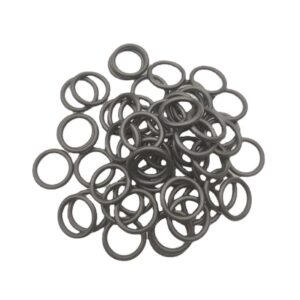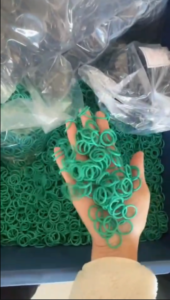Table of Contents
ToggleHow to Set Up an O-Ring: A Step-by-Step Guide for Reliable Installation
Properly setting up an O-ring is critical to achieving leak-free performance and maximizing its lifespan. This guide provides a structured approach to installation, covering preparation, tools, techniques, and verification. Follow these steps to ensure your O-ring functions flawlessly in static or dynamic applications.



1. Pre-Installation Preparation
Step 1: Select the Correct O-Ring
- Material Compatibility:
Choose an elastomer suited to your operating environment:- Nitrile (NBR): Ideal for oils and fuels.
- Fluorocarbon (FKM/Viton®): Resists high temperatures and chemicals.
- EPDM: Best for water, steam, and weathering.
- Size and Dimensions:
- Measure the groove’s inner diameter (ID), width, and depth to match the O-ring’s cross-sectional thickness.
- Ensure the O-ring’s ID aligns with the groove ID to avoid overstretching (typically ≤ 5% stretch for static seals).
Step 2: Inspect Components
- Check the O-Ring:
Look for cracks, nicks, or flat spots. Discard damaged seals. - Examine the Groove:
- Remove debris using compressed air or a lint-free cloth.
- Ensure the groove is smooth and free of burrs or corrosion.
Step 3: Clean and Lubricate
- Clean Mating Surfaces:
Wipe parts with isopropyl alcohol to remove oils, dust, or residue. - Apply Lubricant:
Use a thin layer of silicone grease or system-compatible fluid to reduce friction and prevent twisting during installation.
2. Groove Design and Tool Considerations
Groove Optimization
- Chamfer Edges:
Add a 15° chamfer to bore or rod entries to prevent O-ring damage during assembly [fst.com]. - Cross-Sectional Compression:
Design grooves to compress the O-ring by 10–30% of its cross-sectional depth. Over-compression accelerates wear; under-compression risks leaks.
Essential Tools
- Non-Metallic Tools:
Use plastic picks, tweezers, or O-ring installation tools to avoid cuts or nicks. - Backup Rings (High-Pressure Systems):
Install PTFE or polymer rings on the low-pressure side to prevent extrusion [维基百科].
3. Installation Procedure
Step 1: Remove Old O-Ring (If Applicable)
- Use a plastic pick to gently pry out the old seal without damaging the groove [猫网].
Step 2: Position the O-Ring
- Static Seals:
- Stretch the O-ring slightly and roll it into the groove using your fingers.
- Dynamic Seals:
- Avoid stretching. Slide the O-ring directly into the groove to prevent twisting [International Products Corporation].
Step 3: Ensure Proper Seating
- Avoid Twists:
Ensure the O-ring lies flat in the groove. A twisted seal creates leakage paths. - Finger-Sweep Check:
Run your finger around the groove to confirm uniform seating without gaps or pinches [猫网].
4. Post-Installation Verification
Step 1: Alignment Check
- Confirm mating parts (e.g., piston and cylinder) are centered to distribute pressure evenly on the O-ring.
Step 2: Pressure Testing
- Gradually increase system pressure while monitoring for leaks.
- For critical systems, perform a vacuum test to detect micro-leaks.
Step 3: Visual Inspection
- After disassembly, check the O-ring for:
- Flattening: Indicates over-compression.
- Extrusion: Suggests insufficient backup support.
- Cracks: Signals material incompatibility or aging.
5. Common Mistakes to Avoid
- Using Incorrect Sizes or Materials:
Always cross-reference O-ring specifications with operating conditions. - Skipping Lubrication:
Dry installation increases friction, leading to tears or twists. - Ignoring Groove Quality:
Rough or misaligned grooves compromise sealing efficiency. - Reusing Damaged O-Rings:
Replace worn seals immediately—never compromise on integrity.
6. Advanced Tips for Challenging Applications
- Internal O-Rings:
Hold ends together with oiled pliers and drop into place for tight internal grooves [silveradosierra.com]. - High-Speed Systems:
Use low-friction materials like PTFE-coated O-rings or switch to rotary seals. - Extreme Temperatures:
Opt for perfluoroelastomers (FFKM) for temperatures exceeding 230°C.
Conclusion
Setting up an O-ring correctly demands precision at every stage—selection, preparation, installation, and verification. By adhering to these guidelines, you ensure a robust seal capable of withstanding pressure, temperature fluctuations, and chemical exposure. Remember: even minor oversights, like improper lubrication or misalignment, can lead to failure. Invest time in meticulous setup, and your O-ring will deliver reliable, long-term performance.



Leave A Comment